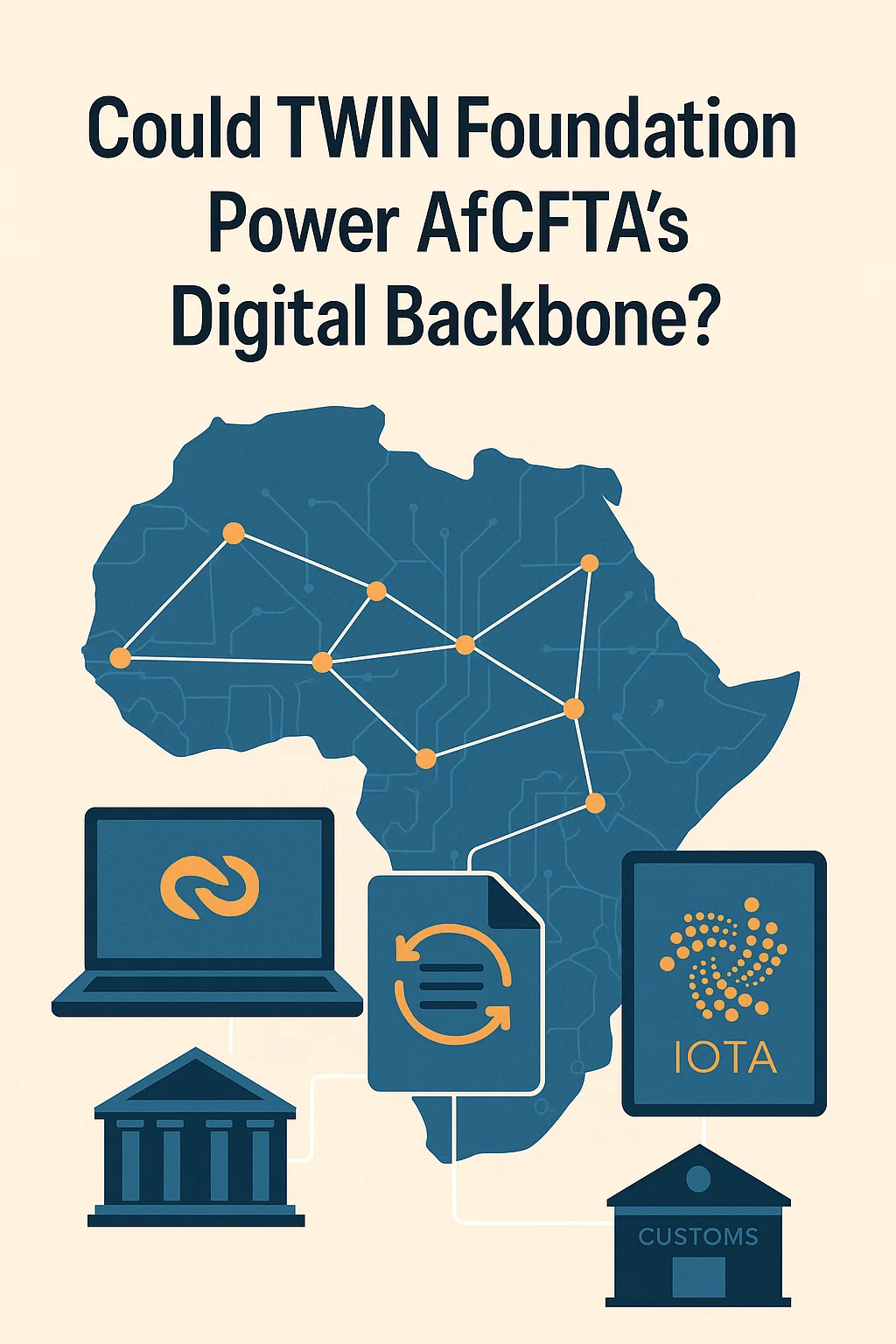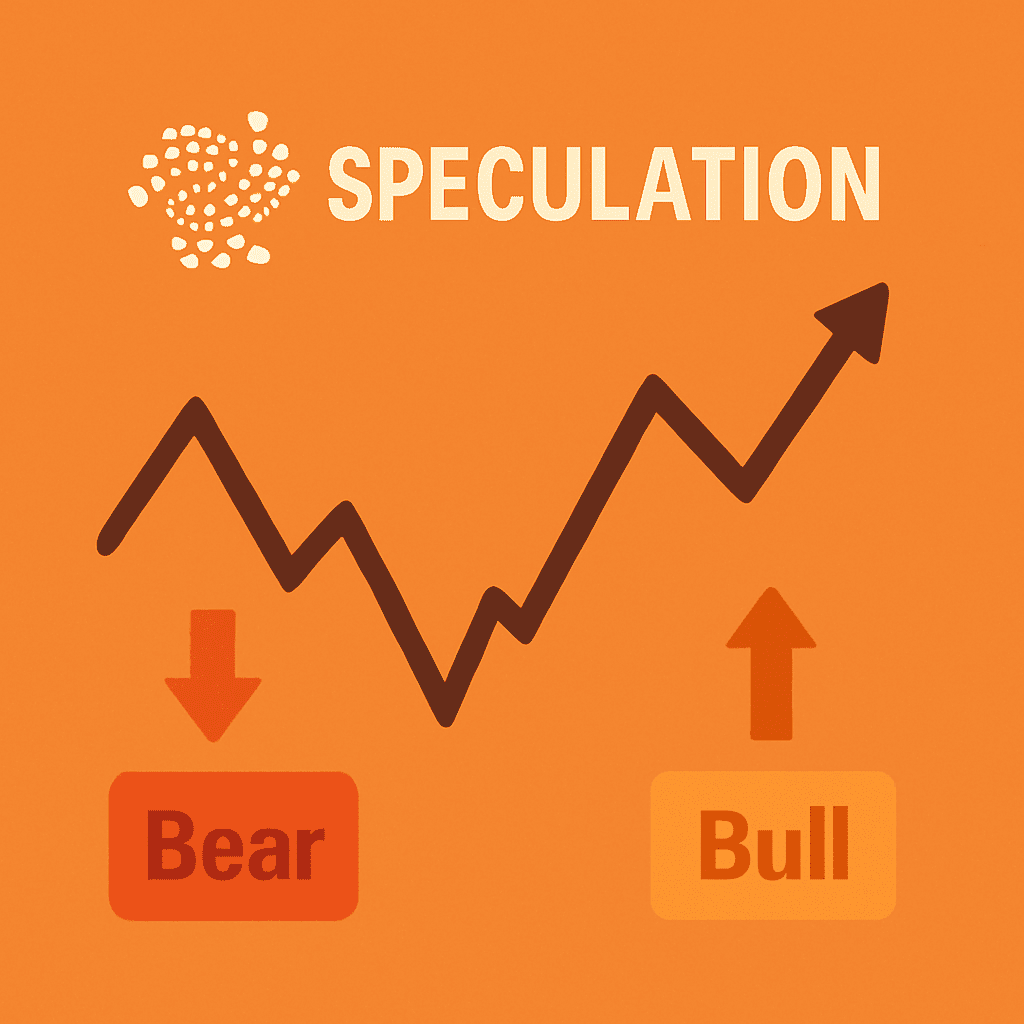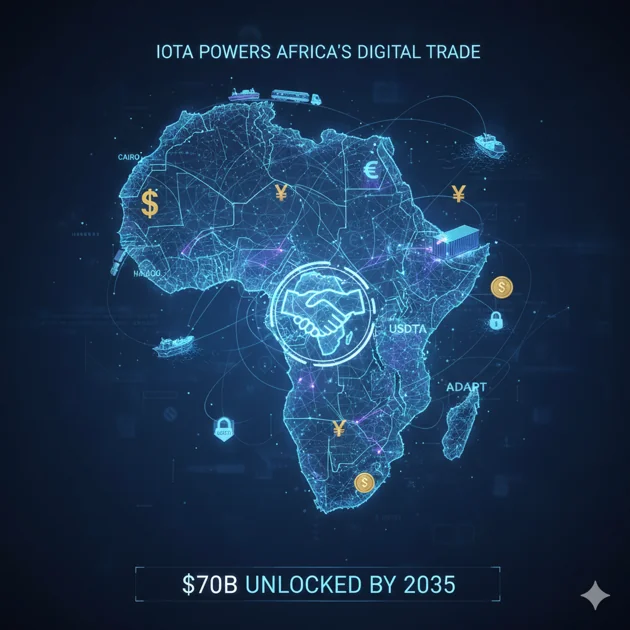Beyond the Hype: What IOTA's AfCFTA Role Could Really Mean
A speculative look at how IOTA, TWIN, and open-source DLT could build the digital trust layer for the AfCFTA, moving beyond the pilot phase.

The Challenge: A $3 Trillion Market Running on Paper
The African Continental Free Trade Area (AfCFTA) is staggering in its ambition: unite 54 nations into a single market. The economic potential is enormous, but so is the friction. Today, much of the continent's trade runs on paper—bills of lading, customs forms, and invoices that are slow, easy to forge, and incredibly costly.
This friction doesn't just slow down containers; it locks out the most vital engine of growth: Small and Medium-sized Enterprises (SMEs).
For years, partners like the World Economic Forum, the Tony Blair Institute, and now the TWIN Foundation and IOTA, have been exploring a solution: what if you could build a digital "trust layer" for all of AfCFTA?
But what does that actually mean? Before we speculate on the future, you can check the IOTA network's current performance with our Staking Tracker.
Disclaimer: This article is for educational purposes only and is not financial advice. Cryptocurrency markets are volatile and risky. Do your own research and consider your circumstances before making decisions. Past performance is not indicative of future results.
From Paper Chains to Digital Highways
The vision being piloted isn't just to "digitize" the old paper forms. It's to create a new, open-source foundation for trade.
Imagine an SME in Kenya wanting to export coffee. Using this new infrastructure, they could:
- Prove their identity instantly using a verifiable Legal Entity Identifier (vLEI), anchored to the IOTA Tangle.
- Prove their product's origin using a Digital Product Passport, showing it's authentic and compliant.
- Share trade documents (like a verified invoice) securely and in real-time with the buyer in Ghana and the customs office simultaneously.
Because IOTA's DLT is feeless, anchoring this data is affordable. Because it's a decentralized, open-source "public good," no single company or country controls the entire system.
Implication #1: Unlocking the SME Juggernaut
This is the most powerful implication. The current global trade finance gap—the gap between the credit SMEs need and what they can get—is measured in trillions of dollars.
Why? Because banks can't easily trust the paper invoices from a small, unknown business.
But if that invoice is a verifiable, tamper-proof digital asset on the Tangle, linked to the company's vLEI? A bank can lend against it with far less risk. This single change could unlock massive new capital for small businesses, creating jobs and driving real-world growth.
Implication #2: Africa Leapfrogs Legacy Tech
Many developed nations are stuck with decades-old, siloed digital systems that don't talk to each other. AfCFTA has the rare opportunity to skip that entire painful era.
By building on a modern, open, and interoperable standard from day one, the 54 member states could create the most advanced and efficient digital trade bloc on Earth. It would set a new global standard for how to build public trust infrastructure, prioritizing sovereignty and avoiding vendor lock-in from private tech giants.
The Real-World Hurdles (And Why It's Still Speculation)
This vision is powerful, but the greatest obstacles aren't technical. The challenges are human and political.
Technology can be built in months; regulatory alignment and political will across 54 unique nations can take decades. The risk is that the project gets stuck in "pilot purgatory" or that bureaucratic inertia wins out. The transition from paper to pixels requires more than just code; it requires a massive, coordinated shift in policy and human behavior.
How This Connects to the IOTA Network
For IOTA stakers, this isn't just an interesting "case study." It is the very definition of network utility.
Every vLEI anchored, every product passport created, and every customs document verified is a transaction that uses the network. This real-world adoption is the foundation of the network's value.
- To estimate how network activity can influence staking rewards, you can use our APY Calculator.
- To explore the long-term potential of sustained network growth, try the Compounding Calculator.
- For more detailed answers on the link between utility and staking, please see our FAQ.
What to Watch Next
As this unfolds, the most important news won't be from tech blogs. It will be:
- Policy Announcements: Look for official AfCFTA standards for digital identity and data sharing.
- Pilot Expansion: Watch for news of pilots moving to new countries (e.g., Ghana, Nigeria, South Africa).
- SME Case Studies: The first stories of real businesses using the system to get a loan or clear customs will be the most powerful signal of all.
Tagged with:
Written by IOTA Staking Team
Expert in IOTA staking, blockchain technology, and DeFi strategies. Providing actionable insights to help you maximize your staking rewards.
Related Articles

US-Vietnam IOTA Trade Deal: Q4 2025 Speculation Analysis
Analyzing leaked reports of potential US-Vietnam agreements with IOTA for digital trade traceability. Bull, base, and bear scenarios examined.

IOTA Price Prediction 2026: How Real-World Adoption Could Drive Value
Data-driven analysis of IOTA's 2026 price potential based on Move smart contracts, Trust Framework adoption, and enterprise partnerships. Not financial advice.

IOTA Powers Africa's $70B Digital Trade Revolution
IOTA is building digital infrastructure for AfCFTA using stablecoins and decentralized identities to unlock $70B in intra-African trade by 2035.
